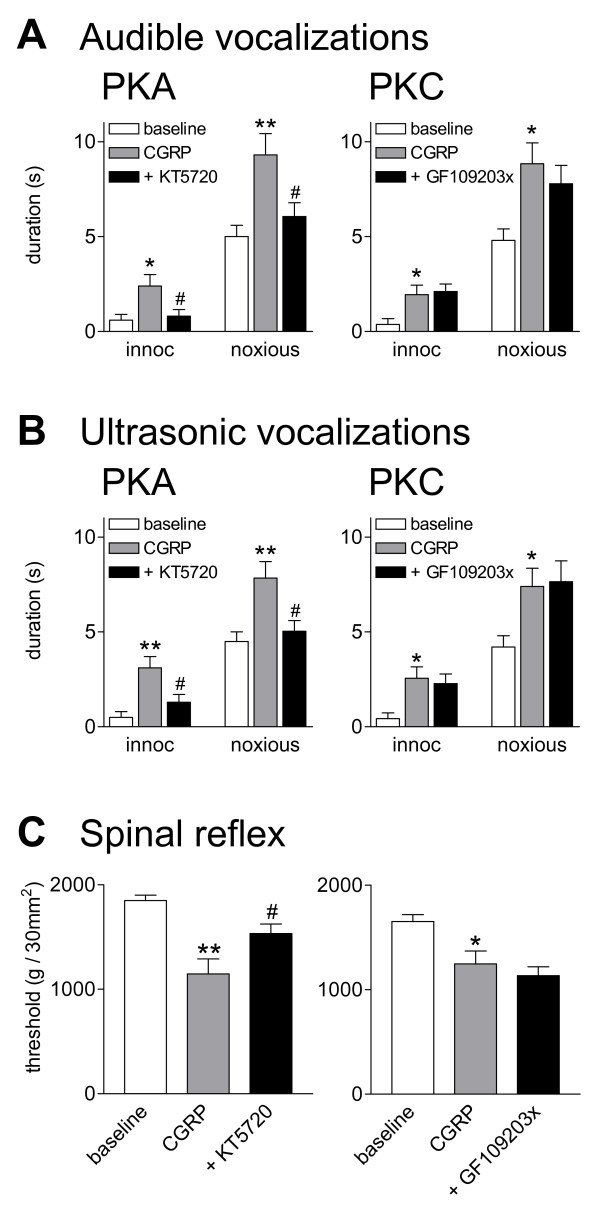Figure 5.
Inhibition of PKA, but not PKC, blocks behavioral effects of CGRP. Vocalizations and hindlimb withdrawal thresholds were measured in awake rats before and during application of CGRP into the CeLC. Audible (A) and ultrasonic (B) vocalizations in response to brief (15 s) compression of the knee with innocuous (500 g/30 mm2) or noxious (2000 g/30 mm2) intensity (see Methods) were measured for 1 min starting with the onset of the stimulus (see Methods). No vocalizations were detected in a control period of 5-10 min before stimulation. Administration of CGRP (10 μM, concentration in microdialysis probe; 15 min) into the CeLC evoked or increased vocalizations of naïve rats (n = 5 in each group). Co-administration of a PKA inhibitor (KT5720, 100 μM, n = 5) reversed the effects of CGRP; a PKC inhibitor (GF109203x, 100 μM, n = 5) had no significant effect. (C) Thresholds of hindlimb withdrawal reflexes measured by compressing the knee with a calibrated forceps (see Methods) were decreased by CGRP administered into the CeLC (10 μM, concentration in microdialysis probe; 15-20 min; n = 5 in each group). Co-administration of KT5720 (100 μM, n = 5) partially reversed the effects of CGRP. GF109203x (100 μM, n = 5) had no significant effect. Bar histograms and error bars represent mean ± SE. * P < 0.05, ** P < 0.01 (ANOVA with Bonferroni posttests, compared to predrug control). # P < 0.05 (ANOVA with Bonferroni posttests, compared to CGRP).

